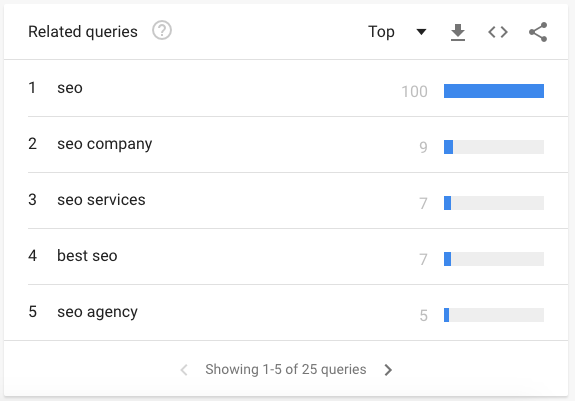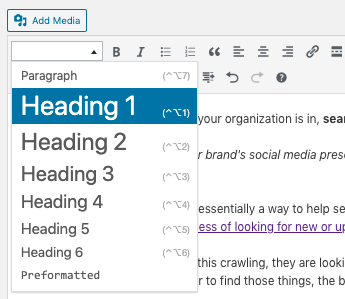No matter what kind of industry your organization is in, search engine optimization (SEO) can help increase traffic to your website, particularly blog content.
TIP: Did you know that your brand’s social media presence also plays a role in search traffic? Check out our blog post “Social Media + SEO: 4 Things to Know” to get all the info.
In case you’re unfamiliar, SEO is essentially a way to help search engines like Google understand your content. They do this by “crawling” your website, which according to Google is “the process of looking for new or updated web pages.”
When search engines complete this crawling, they are looking for a few things to help determine which pages to give priority to when displaying search results. If you make it easier for the crawler to find those things, the better you can rank on search.
By understanding the basics of SEO and keeping them in mind when drafting blog posts, you can rank higher on search engines like Google, meaning more people will see your content.
Here are four simple steps for writing SEO-friendly blog posts:
1. Be Strategic with Keywords

While drafting your blog post, pull 3-4 keywords that you think the people most likely to engage with your post will be searching for. For example, potential keywords for this blog post would be:
- search engine optimization
- search traffic
- website traffic
- Google ranking
Once you have established your keywords, enter each of them into Google Trends to discover which of these words gets the most traffic and is already being searched the most. Select the keywords that perform best, and be sure to check their related topics for additional keyword guidance.
Using Google Trends for the example above, the keywords this blog post should focus on would be “search engine optimization” and “SEO.”
TIP: New to Google Trends? We’ve got you covered! Learn “How to Use Google Trends to Boost Your Brand Presence.”
2. Use Keywords Like a Real Person
While it might be tempting to jam a bunch of keywords into the blog post you’re writing with the hope it will be seen by the widest audience possible, it’s important to remember that content should be written and optimized for people. Search engines can tell when the content you’re providing is too keyword-heavy, so only work them into a post at points where they feel logical.
For example, some of the most logical places for these keywords are the title and opening sentences of your blog post, which will your audiences (and Google) immediately understand what your post is about. Image descriptions and captions are other great places to work keywords in, as images are also crawled by Google.
3. Add Headings to Improve Readability

In addition to breaking up the layout of your blog post for readers, headings are an important factor for SEO purposes. Use headings that include searchable keywords, and be sure to keep them short so they will have the maximum impact on your post’s readability.
Also, don’t forget to use the heading format tool on whatever content platform you’re using to ensure that Google actually recognizes them as headings!
To help you craft compelling headings, think of a search engine’s crawling like a person who is scrolling through your website before actually reading it. Using headings and subheadings that contain the keywords they are looking for will help to prove that your content is what you say it is, and that it has value to a potential reader — thus boosting your search engine rankings in the process.
4. Optimize Your URL
While most content platforms automatically generate a URL based on the title of your blog post, relying on these “auto-URLs” could result in missing out on valuable SEO opportunities for the post.
Not only does a search engine crawl your URL to determine the topic of your post, but users finding the post via search will also see the URL listed front and center. This is why it’s important to keep your URLs relevant to your site’s content, visitor-friendly, and short!
For example, scroll to the top of this page then click around on the Scooter Media blog to check out the URLs for a few of our posts. Our URLs are short and sweet, making them easier to find and clearly telling our audiences and Google what our content is about.
Ultimately, while SEO can seem like an intimidating topic, it’s really not so complex once you start breaking it down into smaller parts. Try utilizing these tips in your next blog post and see how many people it reaches!
Craving more content marketing advice? The Scooter Media blog is full of helpful resources! Here are a few of our favorites:


